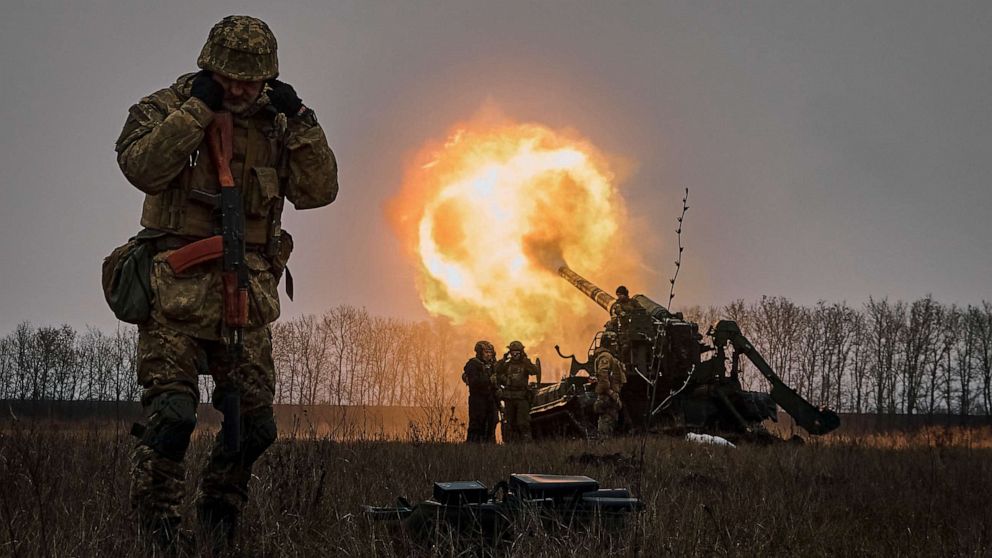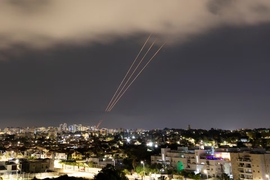One year ago, Russian President Vladimir Putin initiated what he referred to as a “special military operation” in Ukraine. Back then President Putin claimed that the offensive was intended to safeguard the people of Donetsk and Luhansk, two regions of Ukraine controlled by separatists, that were allegedly under attack by the Ukrainian military.
The offensive began soon after Putin acknowledged the self-proclaimed Donetsk and Luhansk People's Republics as independent entities and signed agreements for friendship, cooperation, and mutual assistance with the two separatist regions.
During a televised address on February 24, 2022, President Putin stated that the situation called for swift and resolute measures from the Kremlin.
“The People's Republics of Donbas turned to Russia with a request for help. In this regard, in accordance with Article 51, part 7 of the UN Charter, with the sanction of the Federation Council and in pursuance of the friendship treaties ratified by the Federal Assembly and mutual assistance with the DPR and LPR, I have decided to conduct a special military operation,” he said, referring to the decrees signed on February 21, 2022, the same day that Russia recognized the so-called Donetsk and Luhansk People's Republics as independent entities.
In his statement, Putin declared that Russia had no intention of occupying Ukraine and announced that Moscow would work towards "demilitarizing" the country while holding accountable those responsible for any criminal acts.
Additionally, he alleged that the United States and its allies had disregarded Russia's requests to prevent Ukraine from joining NATO and to provide legally binding security assurances to Moscow, including a ban on Ukraine's membership in NATO, no further expansion of the alliance towards Russia's borders, and no deployment of weapons systems in close proximity to Russian territory.
According to Ukraine and its Western allies, the invasion was an act of unprovoked aggression against a country with a democratically elected government, with the objective of seizing territory.
As a response to the invasion, Western nations implemented a comprehensive package of sanctions on Moscow, which included measures such as halting transactions with Russia's central bank, prohibiting new investments, and freezing the assets of Russian political and business figures.
Russia launched the offensive in multiple directions, targeting the northern, eastern, and southern regions in an attempt to swiftly cripple the defense lines of the Ukrainian army. However, the Russian army's blitzkrieg tactics were unsuccessful due to the resilient resistance of Ukraine's military and civilians throughout the country.
Following the failure of Russian troops to capture the capital and other northeastern cities, Moscow redirected its offensive towards the south. Eventually, Russian forces captured the strategically important city of Mariupol, which is situated along the Sea of Azov in southeastern Ukraine. Mariupol serves as a land bridge between the Crimean Peninsula and the Donbas region, both of which have been under Russia's control since 2014.
By April, the Russian armed forces had gained control of several significant locations in Ukraine. These included the Zaporizhzhia nuclear power plant, the largest of its kind in Europe, along with the decommissioned Chernobyl nuclear plant and the surrounding exclusion zone in northern Ukraine, close to the border with Belarus and only 132 kilometers away from Kyiv. Additionally, Russian troops took over Kherson, which is a vital port city in southern Ukraine located above the delta of the Dnipro River, which flows into the Black Sea.
In early September, the months-long stalemate on the front lines was broken when Ukrainian forces launched a dramatic counteroffensive in the Kharkiv region. This offensive resulted in a significant defeat for Russian forces, who were forced to retreat from key towns such as Izyum, Balakliya, and Kupiansk that they had controlled for months. Later on, Ukrainian forces achieved another major success with a southern counteroffensive, which resulted in the recapture of the city of Kherson on November 11.
Since the recapture of Kherson by Ukrainian forces in November, neither side has been able to make significant advances on the front lines.
In late September, Russia announced its decision to formally incorporate four regions of Ukraine, including Donetsk, Luhansk, Kherson, and Zaporizhzhia, into its territory, despite only controlling part of the claimed territory. This move was widely condemned by Western countries and the United Nations, who referred to it as the “annexation” of the regions.
Although there is no official confirmation from either side regarding the number of casualties in the conflict, some analysts believe that up to 200,000 Russian soldiers have been killed or wounded. It has been estimated that Ukraine has suffered approximately 100,000 casualties among its military personnel and civilians combined, with 30,000 of those being civilian fatalities.
Ukraine and Russia have been at odds since the 2014 crisis in Ukraine’s southern and eastern regions. Ukraine accuses Russia of annexing the Crimean Peninsula — a territory that extends into the Black Sea — and backing anti-government separatist regimes in the country’s eastern regions of Donetsk and Luhansk.
The Moscow-backed referendum held in March 2014 allegedly revealed that over 90 percent of Crimea's residents wanted the peninsula to be under Russian control. However, the vote was declared illegitimate by Ukraine, Western countries and the United Nations.







 Iran's senior military leaders described the drone and missile attack on Israel on April 14 night as “successful".
Iran's senior military leaders described the drone and missile attack on Israel on April 14 night as “successful".
 The number of evacuees from flooded areas in Kazakhstan has reached 97,852 people, including about 32,856 children since March 27.
The number of evacuees from flooded areas in Kazakhstan has reached 97,852 people, including about 32,856 children since March 27.
 Iranian President Ebrahim Raisi warned Israel that it would face a "real and extensive" response if it makes any "mistake" following Tehran’s missi...
Iranian President Ebrahim Raisi warned Israel that it would face a "real and extensive" response if it makes any "mistake" following Tehran’s missi...



